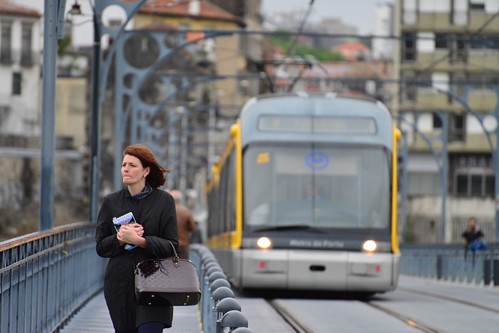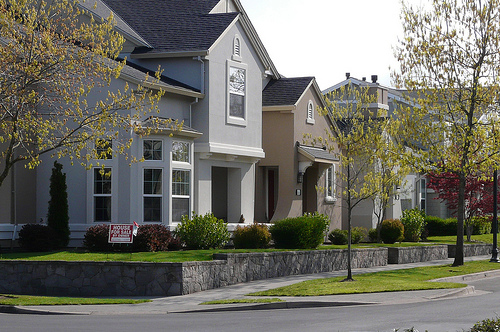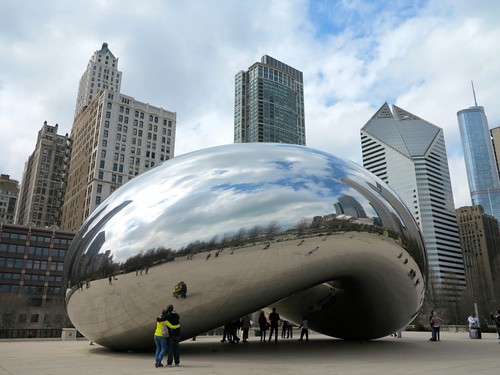How the diverse textures and contrasts of city life engage us

Posted February 17, 2014 at 1:25PM
Some years ago, when our movement to replace sprawl with better cities and suburbs was relatively new, I had a big moment at NRDC. I finally persuaded the Powers That Be in our large, complex organization to feature the issue at our bi-annual Board of Trustees retreat, which was being held that year in Portland, Oregon. Getting on the agenda of such a closely guarded and scripted event was no small thing.
I worked with the locals in Portland to set up a tour of that region’s highlights, including the famous urban growth boundary, the MAX light rail line, the then-beginning-to-evolve Pearl District, and the culmination of the tour at the award-winning Orenco Station development in Hillsboro, perhaps the nation’s first modern transit-oriented suburb. Orenco, which has been highly successful in the marketplace and has delivered the goods on several indices of environmental performance, had recently been chosen by then-vice president Gore as the site of a major address to celebrate livable places. I was excited.
The only problem was that my trustees pretty much hated Orenco Station. Sigh. They liked the issues we presented, but NRDC’s trustees came primarily from busy, diverse places like New York City (where our organization was and remains headquartered) and San Francisco. To them, Orenco was too pristine, too new, too quiet, too highly ordered, too white. It lacked the diverse mix of sights, sounds and smells with which they were familiar and which they found necessary ingredients of life.
To this day, I fret about what I could have done differently to prepare better, to set up my trustees – smart and thoughtful people, every one – for a more favorable experience in Portland and Hillsboro. To me, Orenco is remarkable precisely because of its new suburban qualities – it gives that part of the market something to choose in a more walkable, less sprawling, more sustainable form. But first impressions matter, and that one bombed with my audience.
The impressions generated by the “diverse mix of sights, sounds and smells” found in the most engaging forms of human settlement is the subject of a provocative, ongoing series on the blog myurbanist, written by my friend Chuck Wolfe. The series, essentially a narrated and annotated photo exhibit (Chuck is a gifted photographer), is called in the urban world, juxtapositions matter. Chuck uses his photos not so much to contrast as to combine in thoughtful ways old and new, natural and built, human and mechanical, public and private: layers that make urban – and sometimes rural – life interesting.
In retrospect, believe it may have been the absence of these “juxtapositions” that doomed our visit a decade and a half ago to Orenco Station. Places that give off an impression of being one-dimensional – even if the impression is a bit unfair, as I believe it was with Orenco – simply are not as complex and interesting as those that are.
In one of his examples, Chuck suggests (as do many city park advocates I know) that urban density is actually helpful to city parks, as a source of patronage, funding, and other forms of support, however counterintuitive or, as one of his business associates put it, “incongruous” as it may seem at first blush. In another, he presents a compelling photo of barren, remote landscape in Iceland set behind a foreground of rural houses, in effect showing us that neither would be as compelling without the other. In a third, he presents a multimodal composition of a woman walking beside a tram on a bridge in Portugal, with the buildings of the city faded in the background. The photo is the essence of a city, of travel – the woman appears to be carrying a guidebook – yet an image, like so many of Chuck’s, clearly not from America.
These images, and the questions Chuck asks us to consider as we view them, raise for me important issues relating to what are the essential ingredients that make a city a city. I have argued before in this space (and in my book People Habitat) that there must be a “there” – places must have intrinsic, recognizable value – and that sustainability is “where the heart is” – places must be lovable in order not just to be sustainable in theory but sustained over time. Are these contrasts and textures, or juxtapositions and overlays as Chuck refers to them, critical to the mix?
Perhaps they are. If not critical to the initial design of a new place, we might consider that the best places may not be born with these textures but acquire them over time. They create evidence, if you will, of sustainability. If, for example, Orenco Station – a place I’m rooting for – is to be sustained over time, it may need to acquire additional complexity. I believe it will.
For Chuck Wolfe’s series on juxtapositions, go here.
Related posts:
- Five ways to think about greener, healthier cities (January 13, 2014)
- There must be a there (excerpted from People Habitat) (May 8, 2013)
- Best & worst cities for convenient public parks, and why it matters (June 19, 2013)
- Parks for people, and people for parks (April 28, 2011)
- Orenco Station found to have more walking, community interaction (October 6, 2009)
Move your cursor over the images for credit information.
Kaid Benfield writes about community, development, and the environment on Switchboard and in the national media. Kaid’s latest book, People Habitat: 25 Ways to Think About Greener, Healthier Cities, is available from booksellers nationwide.


